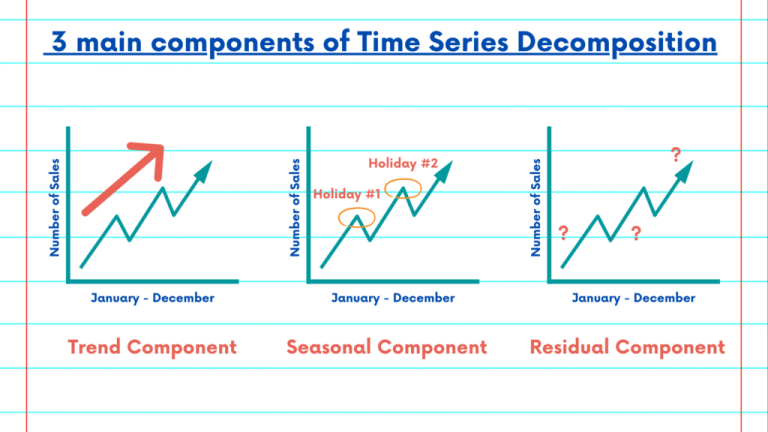
Imagine standing at the shore, watching waves roll in. Some are tall and rhythmic, others short and scattered. Beneath that surface motion lies a constant rise and fall of the tide — a longer-term pattern hidden within daily fluctuations. Analysing data works much the same way. When time-based data looks chaotic, time series decomposition helps reveal the underlying structure — the steady “tide” of trends, the “waves” of seasonality, and the random “ripples” of residuals.
For business analysts, this process is like untangling multiple intertwined melodies from a single piece of music — separating rhythm from harmony to understand how each part contributes to the overall composition.
The Art of Seeing Patterns in Motion
Every business operates within cycles — sales peak during holidays, energy demand rises in summer, and web traffic fluctuates by time of day. Yet, these recurring events are often buried beneath unpredictable data noise.
Time series decomposition helps identify three key components:
- Trend: The long-term direction of change — whether upward, downward, or stable.
- Seasonality: Regular fluctuations driven by periodic events such as months, quarters, or holidays.
- Residuals: Irregular variations that defy pattern, often caused by sudden market events or anomalies.
For professionals learning these analytical skills, joining a business analysis course in Pune offers a hands-on understanding of how to isolate and interpret these layers. It bridges theory with practical tools that businesses use to make data-driven forecasts.
Trends: The Backbone of Decision-Making
Trends tell the broader story — like the steady incline of a mountain trail. A trend reveals whether a company’s performance is improving, stagnating, or declining over time. Analysts detect these shifts using methods such as moving averages or regression analysis, which smooth out short-term fluctuations to uncover the long-term trajectory.
For instance, an e-commerce platform might find that while weekly sales fluctuate due to campaigns or promotions, the underlying trend shows consistent growth across years. Recognising this can guide investment and expansion decisions.
Trends offer clarity amid noise, allowing businesses to plan strategically rather than react impulsively.
Seasonality: The Rhythm Behind the Data
Seasonality represents recurring behaviours that repeat over consistent intervals. Think of it as the rhythmic heartbeat of data — predictable yet powerful. Whether it’s a surge in ice cream sales every summer or increased travel bookings before holidays, these cyclical patterns hold enormous business value.
By decomposing data, analysts can forecast seasonal highs and lows, allowing teams to align marketing campaigns, inventory planning, and staffing levels with expected demand.
Learners studying through a business analysis course in Pune gain exposure to techniques such as seasonal adjustment and Fourier transformation, which help isolate these patterns with precision. This skill ensures decisions are guided by rhythm, not randomness.
Residuals: The Unpredictable Element
Even after removing trend and seasonality, there’s always a bit of chaos left behind — the residual component. It’s what happens when a celebrity unexpectedly endorses a brand or a sudden weather shift impacts sales.
While residuals may appear like statistical leftovers, they hold insights into irregular events that traditional patterns miss. By studying these outliers, analysts can identify opportunities for innovation or spot vulnerabilities that require quick responses.
In business analytics, learning to interpret residuals sharpens intuition — turning unpredictability into actionable intelligence.
Applying Decomposition for Better Forecasting
Time series decomposition isn’t just academic theory — it’s the foundation of forecasting. By understanding how each component behaves, businesses can predict future trends with greater confidence.
For example, separating seasonality allows analysts to make accurate off-season predictions, while recognising a long-term upward trend supports strategic growth initiatives. Combined with modern tools like ARIMA, Prophet, or exponential smoothing, decomposition ensures that forecasts aren’t just based on guesswork but grounded in mathematics and logic.
Professionals mastering these techniques are better equipped to communicate findings clearly, influence decision-makers, and build data-backed strategies that stand up to scrutiny.
Conclusion
Time series decomposition is both an art and a science — a way of listening to what data is truly saying. By breaking down complex patterns into understandable parts, analysts can transform confusion into clarity, uncertainty into foresight.
For organisations, this means more than just better reports — it means smarter actions, timely decisions, and measurable growth. And for professionals eager to master this discipline, learning from structured training can be the difference between merely analysing data and truly understanding it.





